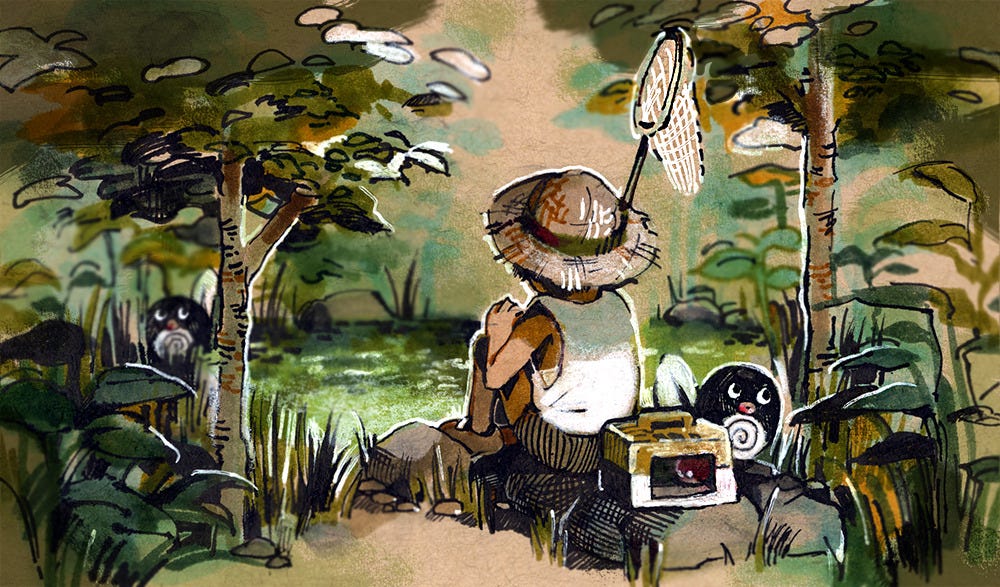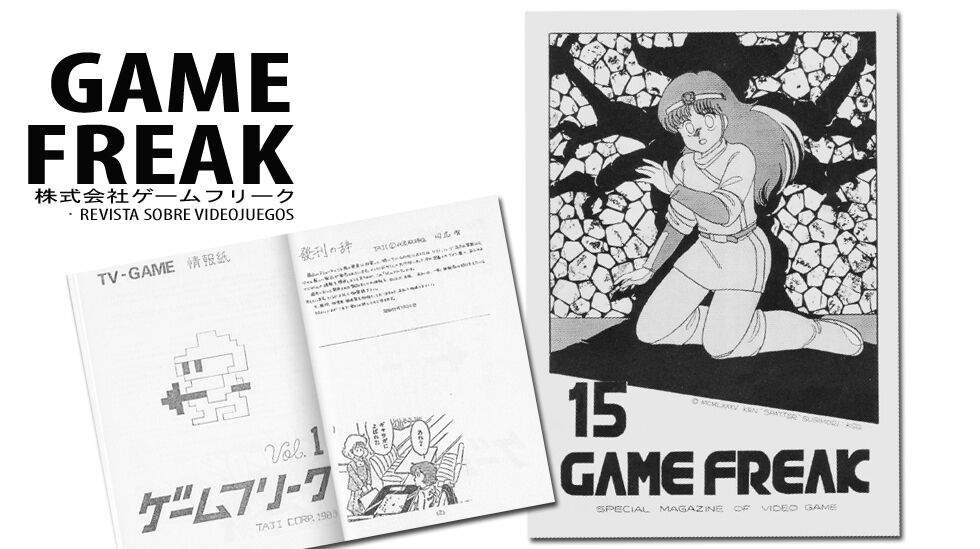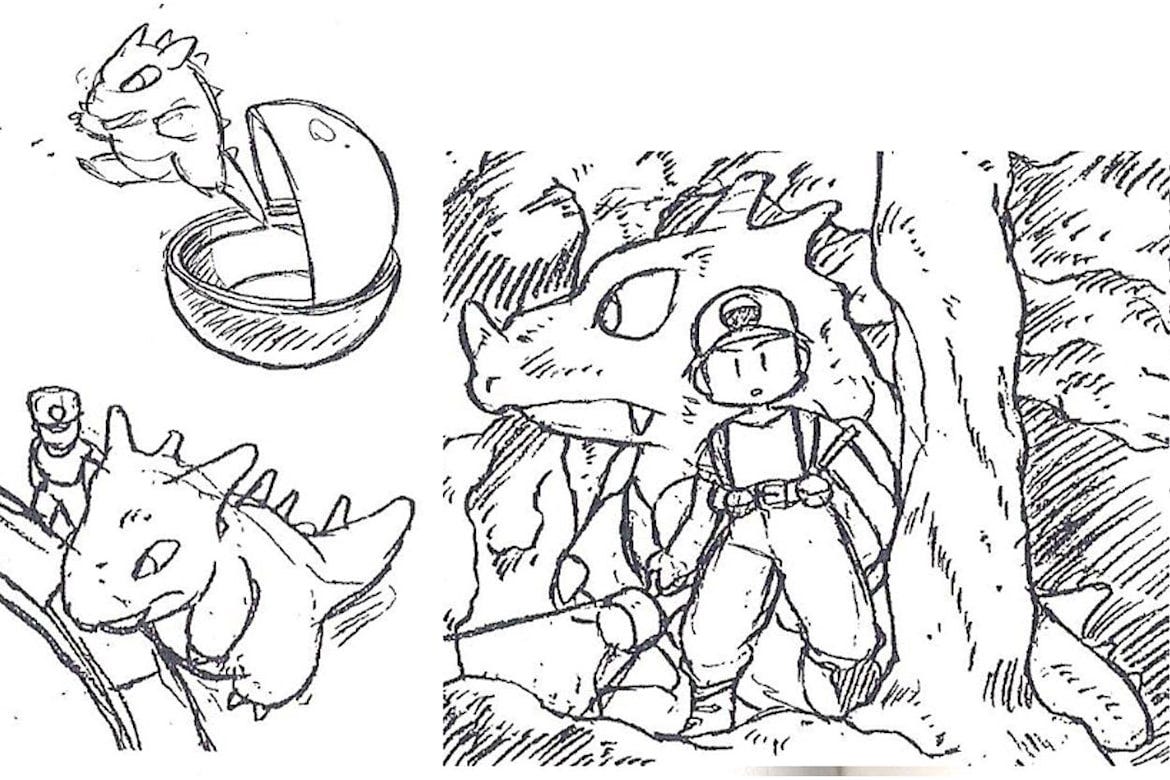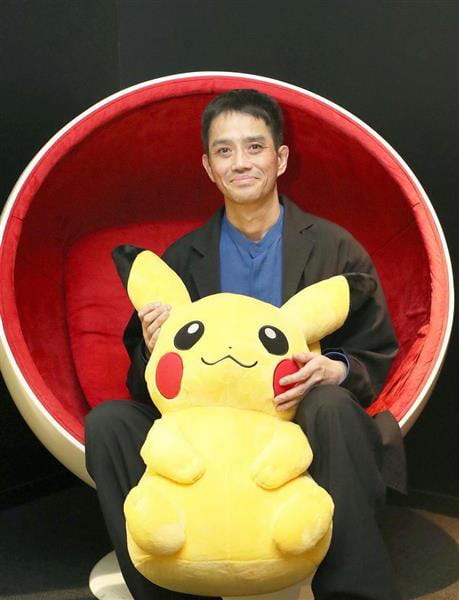First launched on February 27, 1996 in Japan, the Pokémon phenomenon, often referred to as Pokémon Mania, quickly took over the world, becoming one of the most famous and lucrative video game franchises in history. Today, we're taking a look at its creator, the Japanese Satoshi Tajiri, and more specifically at the path that led him to the creation of this universe and to the release of the first games.
Satoshi Tajiri's youth
Satoshi Tajiri (田尻 智 in Japanese) was born on August 28, 1965 in Setagaya, Tokyo, Japan. He grew up in Machida, a city located in the southwest of the Tokyo metropolis, with his parents. His father was a car salesman and his mother a housewife.
In his childhood, Machida was still surrounded by a green environment of large forests and fields. The city also had parks with many bodies of water. At that time, Satoshi liked to go hunting for insects, tadpoles and crayfishes in the nearby areas full of these small creatures. He was such an enthusiastic collector that he was always studying them. He was constantly trying to catch more to add to his collection, with the desire to catch them all. He was even nicknamed Dr. Bug by other children, and wanted to become an entomologist. At the time, he had no idea how much this childhood passion would shape his destiny.
When he turned 10 in the late 1970s, the city entered a period of rapid expansion and urbanization, with the development of the largest residential complexes in the country. This led to the disappearance of natural areas that Tajiri loved to explore in search of insects to catch.
During his teenage years, Tajiri wasn't exactly a model student. With his concentration problems, his difficulties in learning his lessons and his bad relationships with his teachers, he didn't really like going to school.
At the same time, he developed a new passion for arcade games, starting with the iconic game Space Invaders, released in 1978. Japan being the breeding ground of this new industry, he was able to test many arcade games early on. His newfound passion for games sometimes made him skip school. His parents even thought he was becoming a delinquent.
As he played more and more, he wanted to create his own games, especially sequels to existing games. He even disassembled the Nintendo Famicom console to understand how it worked, and then competed in a video game idea contest organized by Sega. And he won.
After nearly failing his high school diploma, his father offered him a job at the Tokyo Electric Company but he declined. He studied electronics and computer science for two years at the University of Tokyo.
The Genesis of Game Freak
At the beginning of the 1980s, he created the Game Freak magazine specialized in the field of arcade games. This self-published publication first came out in 1983 when Tajiri was barely 18 years old. It was still only a handwritten magazine.
He apparently was joined by Ken Sugimori after Sugimori read the magazine and liked it. Tajiri was in charge of the articles while Sugimori did the illustrations for the magazine. Despite modest sales, the magazine gained a small reputation in the gaming community. It publishes interviews with game creators as well as very complete and quasi-professional reviews. He also worked for three other magazines.
Afterwards, Tajiri met the young programmer Junichi Masuda with whom he became friends. As time went on, the team of young enthusiasts decided that they could develop video games on their own, motivated by the fact that more and more games were losing quality. On April 26, 1989, they created their own video game studio with the same name as their magazine: Game Freak Inc.
Their first commercialized game was known as Quinty (renamed Mendel Palace in the West), and was released on June 27, 1989 on NES. The player had to save his girlfriend who had been kidnapped by another girl. At the time of the production started in 1987, Game Freak didn't even have a development license. This was followed by the production of a few games, including Smart Ball (1991, NES) and two games commissioned by Nintendo: Yoshi (1991, Super NES and Game Boy) and Mario & Wario (1993, Super Famicom).
The creation of Pokémon
Let's now talk about Pokémon, the game that will take Game Freak Inc. into another dimension and mark the history of video games
The original idea for Pokémon dates back to 1990. Tajiri apparently got the idea when he saw that Game Boy consoles could be connected by a Game Cable Link. He imagined insects moving along the cable. According to him, it was possible to exchange collectibles! His passion for insects was still intact, he also remembered one of his childhood games in which he imagined that the bigger the insects were, the more powerful they became.
In the urbanized Japan of the 1990s, he wanted to give children a new chance to go on their own adventures and capture insects. So, inspired by his childhood passion and the popular Japanese Gashapon machines, Tajiri and his team created the concept of Capsule Monsters (カプセルモンスタ) and presented it to Nintendo multiple times, all in vain. Nevertheless, detecting an interesting potential, Nintendo entrusted Tajiri with the work of their design studio Creatures, Inc. Tajiri's mentor, Shigeru Miyamoto, took up the idea and submitted it to Nintendo and obtained funds for its development.
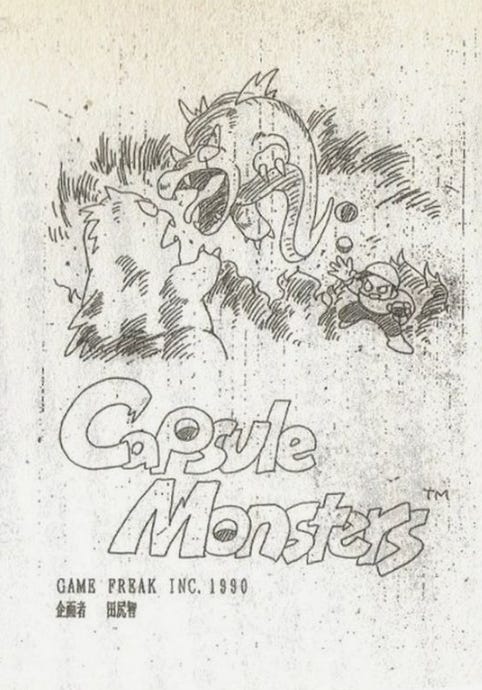
Due to trademark issues, Game Freak Inc. had to change the name of its concept and thus turned it into Pocket Monsters (ポケットモンスタ Poketto Monsutā). The development of the first game then started in 1990.
Originally, the game was going to be much simpler and more compact. But when the team saw Square Enix's The Final Fantasy Legend (1989) released on Game Boy, they realized that they could make something more complex and that wasn't an action game.
The first sketches
Ken Sugimori, who had joined Tajiri at the beginning of the magazine as an illustrator, worked on the first concept arts of the game.
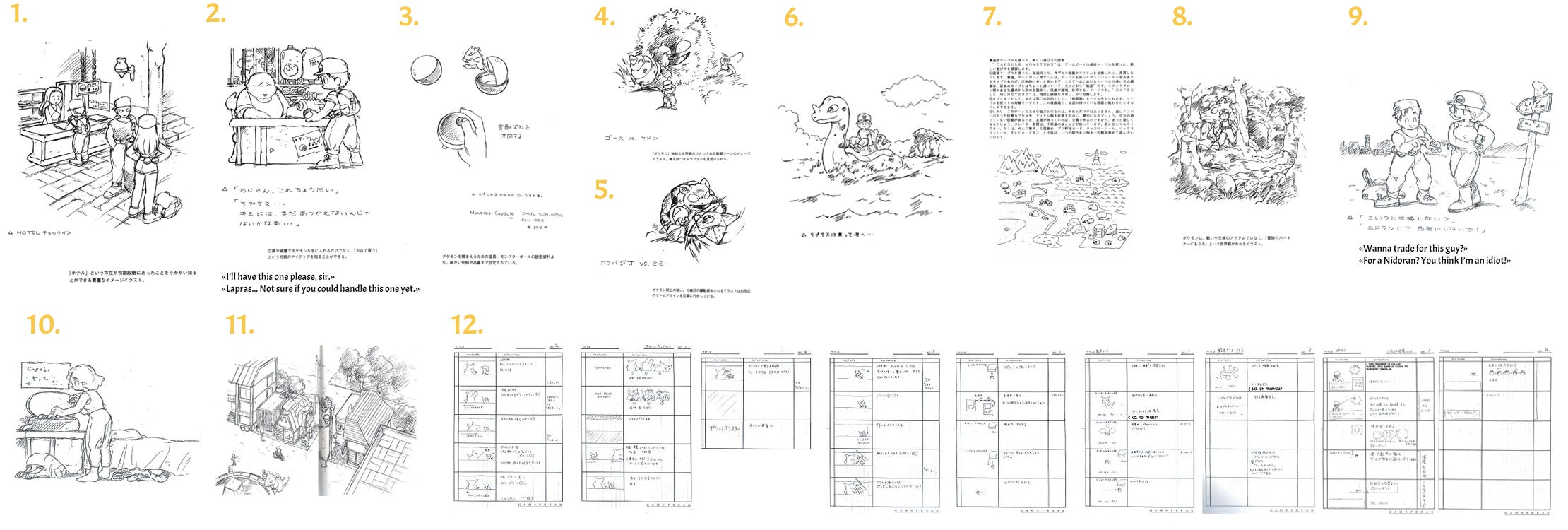
From the first concepts made by Sugimori, we can see that there were many changes in comparison with the game that was published. Initially, there were going to be hotels (drawings 1 and 10) in which the trainers could spend the night and rest. They could also heal their creatures (10) in some kind of machines. These hotels seem to be the ancestors of the Pokémon centers. We can also see that it was planned that the player could buy the monsters he wanted (2).
On the other hand, we can also notice that many gameplay mechanics have remained: the monster capsules (which became the PokéBalls, drawing 3), the battles (4 and 5), the exploration of caves (8) or even the exchanges (9).
Also visible are sketches and annotations describing the geography of the first region-Kanto (7 and 11). This region is totally inspired by the Kantō region located on Honshū, the main island of the Japanese archipelago. This is the region in which the megalopolis of Tokyo is located and it is also Tajiri's native region. Although the topography of the area is only briefly recognizable in this drawing by Sugimori (7), one clue is the Tokyo tower, although it was not kept for the final version of the game. The designers of the game gave most of the cities in the region a name inspired by a color. In drawing 11, we can see the typical architecture of a city in the game, inspired directly by Japanese cities. The Kantō region was also chosen because it is a place that has many of the same geographical features as other regions of the world, so it could be anywhere in the world.
Ken Sugimori, Atsuko Nishida, Motofumi Fujiwara and Shigeki Morimoto designed the original 151 Pokémon characters together. At first, they were all supposed to look threatening, like real monsters, but due to lack of inspiration and the need to please everyone, the decision was made to have cute creatures as well.
Nishida is best known for creating Pikachu, but also 23 other creatures including Bulbasaur, Charmander and Squirtle. She was hired because Sugimori couldn't manage to make "cute" creatures and thought that a touch of femininity could help the team. She imagined the look of these Pokémon from their respective final evolutions. For example, for Charmander, she wanted to design a creature that would be unsuspecting of its evolution, so that people would be surprised to see it evolve into a Charizard.
Fujiwara is the designer of Evoli. Tajiri had asked to have a Pokémon with several possible evolutions. And Morimoto is also known to have worked on the battle system.
It is also worth noting that the first Pokémon that was imagined is none other than Rhydon! That's why it can be found on many of Sugimori's early sketches. In Japanese, it is called サイドン (Sidon) which comes from 犀 sai (rhinoceros) and the suffix -don which refers to the giant monsters of Japanese fiction, such as the enemies of Godzilla or the sentai (like the Power Rangers).
As with the geography of the Kanto region, the Pokémon were created with the goal that they resemble things that could exist in real life. For example, the Game Freak team designed Grimer based on the pollution and contamination of the environment. As Tajiri says in an interview:
“Kids all around the world have gone to the river to catch tadpoles, just to end up realizing they’re all covered in sludge. That’s why I think every single Pokémon has a story that people around the world can understand.”
Production
The production of the first Pokémon games lasted six years and almost caused Game Freak Inc. to go bankrupt. There was often a shortage of money to pay the employees and five of them left. Tajiri did not receive a salary at certain times and instead lived off his father's income. Thanks to Creatures, Inc. and its investments, production was able to continue. In exchange, the company owns one-third of the rights to the franchise. The production of the Yoshi and Mario & Wario games during production also provided more funds and experience.
Shigeru Miyamoto had another idea that changed everything in the development of the game and the way it would be sold: to create two versions, a red and a green one (the blue and red colors will be chosen for the international market). Two identical Pokémon adventures with 130 creatures shared between them, and 20 Pokémon exclusive to each version: a concept that would force players to buy both games or exchange the missing little monsters with their friends.
The hero's first name in the Japanese version of the game is that of the game's creator, Satoshi. As for the rival's first name, he is given the name Shigeru, as a thank you for the mentor Miyamoto. These are the same first names that will be used in the anime.
In the franchise, all the heroes are children. It is the same in the animated series in which Ash Ketchum (Satoshi in Japan) does not grow up. Why not? Tajiri made this decision during the production process. According to him, children and adults see the world differently and he wanted us to see the world as a child sees it. As a child, he hated not being treated equally with adults. That's why in the franchise, children and adults are treated the same. As the player wins his fights, he becomes more and more respected by the adults he meets and gains confidence. According to Tajiri, this is what all children feel.
The three original partners of Game Freak magazine (Tajiri, Sugimori, Masuda) continued to work together on the first game. While Sugimori was in charge of the character development, Junichi Masuda composed the game's music, which was to become a culture reference, as well as the game's sound effects, including the noises made by the creatures. For his part, Tajiri imagined the names of the creatures, which should reflect both their physical appearance and their attack capabilities, in order to facilitate their recognition and attachment by children. For example, the name Pikachu is a portmanteau of the words, pika (ピカ), a Japanese language onomatopoeia for a spark or lightning bolt, and chū (チュウ), a Japanese onomatopoeia for a mouse's squeak, although its creator Nishida said she was inspired by a squirrel instead when designing it.
Nintendo of America's foolish idea
Nintendo of America thought the creatures were far too cute for the American market, so they hired artists to redesign them in the graffiti style, which was booming in the United States at the time. But the end result was sorely lacking. They didn't have the creative touch for a project like Pokémon, so Nintendo of America decided to back off, thank goodness. What would Pokémon look like today if the changes had been kept?
The Pokémon surprise
The last few weeks of production have been very intense and Game Freak has been experiencing delays. Tsunekazu Ishihara, president of The Pokémon Company since 1998, remembers:
“We missed the end-of-year sales season [1995] and released the game at the end of February of the following year, which is the worst time for game sales! So I thought we had missed the boat.”
On February 27, 1996, after six years of hard work, Pocket Monsters: Red (ポケットモンスター 赤) and Pocket Monsters: Green (ポケットモンスター 緑) were released in Japan for Game Boy, despite the fact that Game Boy was in a kind of decline because neglected by Nintendo's marketing.
The games made less than 110,000 sales in the first week, and dropped to less than 6,000 sales in the third week. However, word of mouth soon spread, especially with rumors of a hidden Pokémon, Mew, which Tajiri had hidden from Nintendo until the games were released, but which he believed would promote interaction between players. Pokémon ended 1996 with 1.66 million sales. It went on to sell 4 million copies in 1997. Nintendo made it official that it had surpassed the sales of Super Mario Bros., becoming the best-selling new game in Japanese history.
Game Freak did not immediately realize the success of its new games, as sales information was slow to trickle down to them at the time. Until 1998, according to Masuda, Game Freak worked relatively blindly.
The game was released worldwide in 1998, under the name Pokémon Red Version and Pokémon Blue Version. The game appeared in the United States and Australia that year, and then in Europe in 1999, even though Pokémon Gold Version and Pokémon Silver Version had already been released in Japan. The first two versions of the game were a huge success all over the world: more than 30 million games were sold, a third of them in Japan, making it the second best-selling game in the world at the time. Moreover, they remain the best-selling versions in the history of the franchise.
Pokémon has quickly become one of Nintendo's most lucrative licenses. The Pokémon Company (株式会社ポケモン, Kabushiki-gaisha Pokemon) is established in 1998 to manage the brand. An animated series and movie were created, as well as manga and trading cards. The Pokémon wave rapidly spread around the world and became a global cultural phenomenon. Pokémon made History.
What has become of Satoshi Tajiri?
The creator of Game Freak and Pokémon continued to oversee the studio's game production.
Just before the release of Pokémon Gold Version and Pokémon Silver Version, Time interviewed with Satoshi Tajiri, who had just wrapped up development. Tajiri explained that for the past three years, he had been working 12-hour nights and 24-hour days. The reporter says in the introduction that Tajiri had large dark circles, red, "bloodshot" eyes, and trembled when he spoke. "He looked like he needed a long rest." What he did: Pokémon Gold Version and Pokémon Silver Version were his last games as a director, and he's been almost invisible since.
Tajiri remains the president and owner of Game Freak Inc. and is still credited as the executive producer of the games. Which in Japan is often the status given to the big boss, even though he had absolutely no involvement in the production. Tajiri disappeared from the media altogether and handed over the leadership of the studio to Junichi Masuda, who was there from the beginning.
Satoshi Tajiri remains a very important personality in the history of video games, now very discreet and mysterious.
This article was written as a tribute to Satoshi Tajiri, as well as to the original Game Freak Inc. team, including Junichi Masuda, Ken Sugimori, Atsuko Nishida, Motofumi Fujiwara Shigeki Morimoto, and Koji Nishino.
I hope you enjoyed reading it. See you soon for a special article!
References
Interview with Game Freak’s founder Satoshi Tajiri and The Pokémon Company’s president Tsunekazu Ishihara, published in 2000 in the Nintendo Online Magazine in Japan.
Pokémon. L’histoire derrière la création du jeu vidéo culte sorti il y a 25 ans, an article published in the French regional newspaper Ouest-France in 2021.
Early sketches from Ken Sugimori, Medium.
Interview with Ken Sugimori, Koji Nishino and Atsuko Nishida, Pokémon official website, published on July 26, 2018.
Time Asia - Interview with Satoshi Tajiri, published on November 22, 1999.




